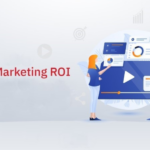- March 5, 2024
- Uncategorized
- 0 Comments
Introduction:
Email marketing remains an indispensable tool for businesses seeking to establish meaningful connections, enhance brand awareness, and drive engagement with their target audience. With its widespread usage and proven effectiveness, email marketing offers a plethora of benefits and opportunities for businesses to thrive in the digital landscape.
Benefits of Email Marketing:
Email marketing serves as a versatile strategy, enabling businesses to achieve various objectives:
Building relationships: Foster personalized engagement to strengthen connections with customers.
Boosting brand awareness: Keep your brand top-of-mind for potential prospects, increasing recognition and recall.
Promoting content: Share valuable blog articles and resources with your audience to provide relevant information.
Generating leads: Entice subscribers to provide their information in exchange for valuable assets, facilitating lead generation.
Marketing products: Promote your products and services directly to your audience, driving sales and conversions.
Nurturing leads: Provide valuable content that aids customers in achieving their goals, enhancing loyalty and satisfaction.
Key Statistics:
Several compelling statistics highlight the significance of email marketing:
87% of marketers consider email marketing critical to business success.
Email ranks as the third most popular owned media platform for B2B marketers.
There are over 4.3 billion email users worldwide, with projections indicating growth to 4.48 billion by 2024.
Email marketing yields an impressive ROI of $36 for every dollar spent.
51% of marketers regard email marketing as the most effective marketing channel.
53% of marketers plan to continue investing in email marketing, with 33% increasing their investment in 2023.
33% of marketers send weekly emails, while 26% send emails multiple times monthly.
Getting Started with Email Marketing:
Embarking on an email marketing journey involves strategic planning and execution. Here’s a step-by-step guide to initiate your email marketing endeavors:
Create an Email Marketing Strategy:
Define your target audience and understand their needs and preferences.
Establish clear goals aligned with industry benchmarks and average email statistics.
Build Your Email List:
Implement strategies to encourage prospects to opt-in to receive your emails.
Treat every subscriber as valuable and nurture your list organically over time.
Choose an Email Campaign Type:
Select the appropriate email campaign type based on your audience’s preferences and content strategy.
Segment your email lists to deliver targeted and relevant content to different subscriber groups.
Make a Schedule:
Determine the frequency of your email communications and inform your audience upfront.
Maintain consistency in your sending schedule to build trust and credibility with your subscribers.
Measure Your Results:
Monitor key performance metrics to evaluate the effectiveness of your email campaigns.
Make data-driven adjustments to optimize your email marketing strategy for better results.
Choose an Email Marketing Platform:
Select a reliable email marketing provider that offers essential features and analytics for campaign optimization.
Utilize platforms like HubSpot’s Email Marketing tool for efficient campaign creation, personalization, and performance tracking.
Conclusion:
Email marketing serves as a cornerstone of digital marketing, offering unparalleled reach, engagement, and ROI for businesses of all sizes. By leveraging the strategic principles and actionable steps outlined in this guide, businesses can unlock the full potential of email marketing to drive growth, foster customer relationships, and achieve marketing objectives effectively and efficiently.



